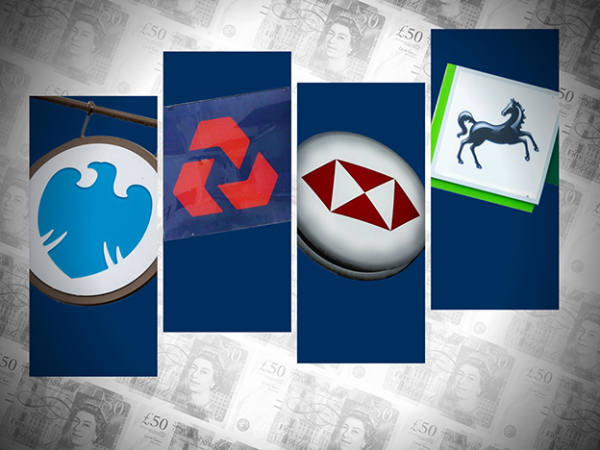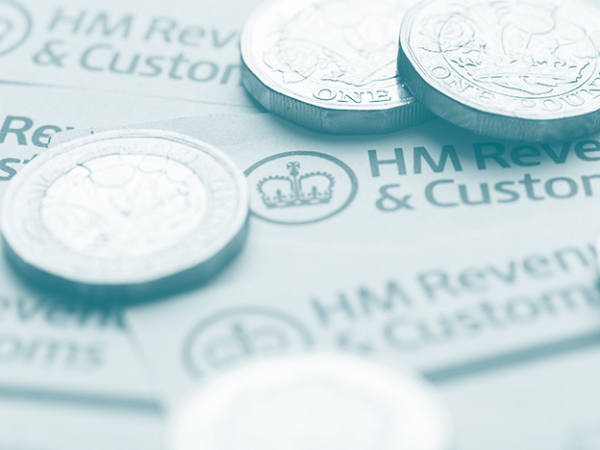Tim wants to grow his pensions to a sufficient size to provide a retirement income of £60,000 per year
He risks breaching the pensions lifetime allowance so his wife should consider making pension contributions rather than Tim maximising his
He should be mindful of the correlations that investments in gold and mining company shares have with other investments
Pensions invested in funds, gold and silver coins, cash, residential property.
Build up pensions worth £1.25m-£1.5m by age 65, income of £60,000 per year in retirement, give children deposits to buy properties when they are adults.
Tim and his wife are age 42. He earns £118,000 per year and his wife has recently started a job in which she earns £12,500 per year. Their home is worth around £450,000 and has a mortgage of £140,000.
“I would like to build up pensions worth between £1.25m and £1.5m by the time I am age 65,” says Tim. “I would to get an annual income in retirement of £60,000, or not much less, by withdrawing 3 to 4 per cent a year from my pensions.
“I and my employer each contribute about 4 per cent of my salary per year to my workplace pension, a defined contribution (DC) scheme, and this currently amounts to £786 per month. I don’t have a great choice of investments so it is invested in the default fund, Scottish Widows Pension Portfolio Two (GB00B09CD637) which mainly holds global equities.
"I also contribute £500 per month to a self-invested personal pension (Sipp). All my savings go into my pensions to reduce tax and get higher rate pension contributions relief.
"These two pensions are worth about £363,000, but I think that there is a shortfall so I am trying to increase my total monthly contributions to £1,600. I also have a small defined benefit pension which will pay around £2,500 per year in today’s money.
"My wife’s current workplace pension is worth about £1,000 and she has a DC pension worth about £28,000 from a previous employer. She has not built up her pensions much due to taking time away from work to look after our children and, as I am the higher earner in a higher tax bracket, we decided it was better for me to focus on paying into pensions.
"I would also like to give my children deposits to buy properties when they are adults so contribute to junior individual savings accounts (Isas) for them.
"I have been investing for over 20 years and think that I could tolerate a fall in the value of my investments of up to 30 per cent. However, as my pension has grown I have become slightly less tolerant of large declines in its value. So if it fell by more than 30 per cent I would try to further increase my monthly contributions.
"I am torn between capital preservation and growth, so hold some gold and shares in gold mining companies as insurance. But I don’t have much exposure to bonds because I cannot see any value in them at present. I have recently sold investments in index-linked bond, corporate bond and commercial property funds to have a higher weighting to equities to help meet my eventual goals. I am forsaking capital preservation for future returns.
"I have simplified my portfolio by taking a ‘core and satellite approach.' Doing this has made it more manageable as I have enough time to review the holdings’ performance.
"The core holdings are mainly passive, low cost, broad funds focused on large-cap emerging markets stocks and smaller companies. I am comfortable with these as long term holdings.
"The smaller allocations – the satellites – are investments in sectors or themes I think will do well over the short to medium term, and I may often change this portion of my self managed investments. The funds I use to get exposure to these areas are high conviction with a high active share.
"I have substantial exposure to the UK and Japan because I think these areas are good value. I also hold quality, private equity and Asia growth funds, as I want a balance between growth, value and quality. So I am thinking of adding to my holding in Smithson Investment Trust (SSON), a recent addition, as my portfolio is too value based.
"But I am not sure if I should have a greater weighting to growth and momentum funds. I am a little nervous of the high valuations of US equities which performed excellently over the past decade but may not continue to.”
| Tim and his wife's portfolio |
| Holding | Value (£) | % of the portfolio |
| Vanguard LifeStrategy 100% Equity (GB00B41XG308) | 51,423 | 11.9 |
| Vanguard Emerging Markets Stock Index (IE00B50MZ724) | 35,583 | 8.23 |
| iShares MSCI World Small Cap UCITS ETF (WLDS) | 32,349 | 7.48 |
| Personal Assets Trust (PNL) | 31,322 | 7.25 |
| Cash | 31,217 | 7.22 |
| Scottish Widows Pension Portfolio Two (GB00B09CD637) | 30,474 | 7.05 |
| Smithson Investment Trust (SSON) | 30,079 | 6.96 |
| Edinburgh Investment Trust (EDIN) | 29,213 | 6.76 |
| Wife's pensions | 29,000 | 6.71 |
| Pacific Assets Trust (PAC) | 28,046 | 6.49 |
| Man GLG Japan CoreAlpha Equity (IE00B64XDT64) | 27,839 | 6.44 |
| Pantheon International (PIN) | 27,357 | 6.33 |
| iShares Physical Gold ETC (SGLN) | 25,682 | 5.94 |
| iShares Gold Producers UCITS ETF (SPGP) | 13,074 | 3.02 |
| Gold and silver coins | 9,600 | 2.22 |
| Total | 432,258 |
NONE OF THE COMMENTARY BELOW SHOULD BE REGARDED AS ADVICE. IT IS GENERAL INFORMATION BASED ON A SNAPSHOT OF THESE INVESTORS' CIRCUMSTANCES.
Chris Dillow, Investors' Chronicle's economist, says:
Pension contributions are the most tax-efficient way of saving, but your pensions might run up against the lifetime allowance. If you contribute £1,600 a month to your pensions and get average returns of 4 per cent per year you will have over £1.5m by the time you are age 65. The lifetime allowance is currently £1,073,100. Once you are above this level, you pay 55 per cent on lump-sum withdrawals and 25 per cent tax on income on top of your usual income tax rate.
An obvious solution to this is to invest in an Isa alongside your pension. This doesn’t attract tax relief, but you can put £20,000 a year into it and get income and capital gains free of tax. Investors face not just investment risk, but also regulatory and tax risk, so we must be alert to these.
There’s a lot to like about your portfolio. A core/satellite approach helps to avoid the problems of over diversification and excessive fund manager fees. I like that you’re invested in unquoted companies via Pantheon International (PIN). I suspect that a good portion of what growth we get in coming years might come from companies that are not yet quoted.
But remember that private equity funds can carry more than usual amounts of fund manager risk. This is because, to a greater extent than listed stocks, one or two great successes or failures can make a huge difference to a fund’s performance. Consider diversifying this risk by spreading your money across various private equity funds, perhaps including a few venture capital trusts (VCTs) given their tax advantages.
I understand your aversion to bonds. In normal times, these lose money in real terms. So we should regard them as insurance against the danger of fears of recession or investors becoming more risk averse. But such insurance is expensive and if you’re a longer-term investor willing to look through short-term spills you don’t need it. A better safe asset is cash, as losses on this are limited to the real interest rate. But you should hold cash outside a Sipp.
From this perspective, I’d be wary of gold. The circumstances in which bonds do badly – rising interest rates – are also ones in which gold can suffer. This is because gold pays no interest so becomes less attractive when interest rates rise. By all means hold gold as a hedge against many of the risks that could hurt equities. But don’t regard it as very different to bonds.
Also, distinguish between gold and gold mining company shares as they are different assets. Mining company shares do well when investor sentiment on equities improves, whereas gold often does not. And mining stocks tend to be well correlated with emerging markets so holding both mining stock and emerging markets funds piles you up with the same risks. While this isn’t a disaster for now, given that both are volatile and fall a lot in bad times, it could become very detrimental. So have an exit strategy: selling assets when their prices fall below their 10-month average works well.
Kay Ingram, chartered financial planner at LEBC Group, says:
You aim to retire at 65 and have around £60,000 income per year before tax. At today’s tax rates that would give a net income just over £4,462 per month. By paying into your employer’s pension scheme to maximise its contribution and topping this up, your annual contribution of £10,720 is highly tax efficient now. This is especially the case as you earn over £100,000 meaning that your income tax allowances are reduced.
An income of £118,000 usually means that your tax free income is reduced by £1 for every £2 over £100,000. Your personal pension contributions of £10,720 per year reduce the income counted to £107,280, giving you a personal allowance of £8,930 instead of £3,570. This increases the effective rate of tax relief on your pension savings from 40 per cent to 60 per cent. If you increase your personal contributions to £18,000 a year your taxable income will reduce to £100,000 with the income tax personal allowance restored to £12,570 [for the 2021/2022 tax year].
Reducing your income below £100,000 would make you eligible to save into a tax free childcare account, with up to £2,000 per year of tax subsidy for each child under 12 added to your own savings of up to £8,000 to fund childcare. This can includes nannies, nurseries, and holiday and sports clubs registered with the scheme.
But as you are married you also need to think about the longer-term taxation of your retirement income as a couple. Your plan to build up a pension pot of £1.5m while your wife has very little pension may make it harder for you as a couple to achieve the £4,620 per month net you seek from age 65.
Your pension pot will suffer additional tax charges if it exceeds the lifetime allowance which is currently £1,073,100 and frozen at that figure until 2026. The government may resume consumer price index (CPI) inflation indexation of the lifetime allowance. This would mean that if CPI is at or above 2 per cent a year, by the time you are age 65 the lifetime allowance will have grown to just over £1.5m. But if inflation is lower, the lifetime allowance is permanently frozen or your pension makes returns above inflation, your pot could exceed the lifetime allowance. That could lead to a surcharge of between 25 and 55 per cent tax payable on the excess.
When you draw income from your pension pot 25 per cent is tax free, but the balance is subject to income tax and the person who owns the pot pays the tax. A couple with one taxable income of £60,000 receive a net income of £53,550 net per year. If each has a pension, two lots of tax allowances reduce the tax payable and increase the net income.
Your wife’s pension savings could be increased to 100 per cent of her earned income. These will attract tax relief at 20 per cent. While this is less than the relief you would receive, she will pay less tax on her pension income when she draws it as she is likely to be a lower taxpayer than you. This is granted automatically, regardless of whether she pays tax, as long as she selects a provider which gives relief at source. She has more scope for growth before being impacted by the lifetime allowance charge.
Maximising your pension contributions makes sense in the short term. But any additional savings should go into your wife’s pension as this will mean that in the longer term your retirement savings won't need such a high growth rate to meet your target net income.
Your employer may have made workplace guidance or advice available. If so, take it and review how your current workplace pension is invested and whether there is a better option for you within the scheme. Employers may fund workplace advice of up to £500 per year tax free or you can pay for it via a salary exchange, reducing the cost by the tax and national insurance saved.












